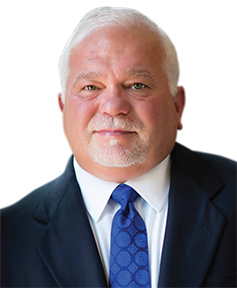After taking a hiatus last month to explore the ramifications of the proposed rescheduling of marijuana, we’re back with the fifth — and final — installment of a series designed to help motor carriers create and implement an effective safety plan. If you missed Parts 1-4, click here for to access previous Ask the Attorney columns.
In those first four installments, we talked through each team’s role in onboarding and continuing to develop safe drivers.
Now we come to an all-important question: How can we know what is working and where we should invest our efforts? Here’s a breakdown that may help.
Recruiting
What does success look like for a recruiter in hiring safe drivers? The point at which you pay a bonus will tell the recruiter what to value.
You may want recruiters to bring as many interested and basically qualified people as possible and let the orientation team worry about safety-mindedness — or you may want the recruiters to invest more time upfront to bring in safety-minded (but fewer) candidates, spending less money on travel/hotels and time with the wrong people. You must determine what setup is right for you.
If you do want to hold recruiters accountable for the success of the driver, it is important to measure how many of their individual recruits succeed in orientation and the reasons their recruits fail orientation.
- How can you help improve the recruiter’s conversation around that topic, either disqualifying the candidate in advance of coming or setting better expectations for the candidate ahead of coming?
- Is the recruiter ensuring the driver completes anything in advance? New hire paperwork? Advance safety training? Drug screens? Physicals?
- If these are encouraged rather than required, what percentage of the recruiter’s candidates are actually completing the recommended pre-orientation steps? What can they do to improve completion?
Orientation and Road Training
To avoid bias (or even the appearance of bias) in who you determine is or is not a safe fit throughout the orientation process, you can implement assessments with well-defined right and wrong answers.
Well-planned assessments both mitigate biases and create useful measurements — and measurements create the opportunity to evaluate correlations. Correlations allow you to hypothesize what changes could be made to improve the effectiveness of your safety training and, as such, both assemble a safer fleet and expand your pool of candidates.
For example, you might create a points system with pass/fail scores on your road test, similar to that of a driver’s examination. On the form you would note what infractions were made and how many negative points were accumulated for those infractions. This reduces any concerns of possible bias during the examination, and it also creates a measurable metric you can use to compare against CDL schools attended, previous experience driving, etc.
Using this information, you may be able to have conversations with specific CDL schools about what portions of your road test their alums are failing. You could also consider what additional training you may want to offer/require based on an applicant’s previous driving experience. You may want to update pre-orientation materials you offer based on trends you see in previous driving experience, or even require folks with less experience come a day early for additional instruction.
You may want to stop hiring from certain CDL schools altogether if they’re unwilling to update their programs to improve their alums success in your orientation.
Similarly, an assessment at time of upgrade from road trainer to a truck would provide an excellent review of the road trainer’s work as well, along with giving you the ability to see what topics road trainers may need to cover in more detail during road training. Or, perhaps, you might find an opportunity to consider adjusting training in orientation to cover the topic in more detail (or maybe insight into who should be removed from your road trainer program).
Orientation supervisors and road trainers should be very well trained in and given a voice in these assessments. The more say people have in a process, the more likely they are to follow it. Schedule a regular review, perhaps quarterly or biannually, to review your assessments with those facilitating them and discuss updates. At your discretion, share the trending results you see from the assessments and ask their suggestions on what can be adjusted in training so more people with the right attitude can learn the skills to be safe. Perhaps they’ll have ideas on other items to measure.
First Year and Beyond
In Part 3 of this series, I asked a few questions to get your mental wheels spinning about what to measure in your fleet and how to structure your training and coaching around those measurements. Who is having what kind of accidents — and when and why?
Are poor directions taking them down bad roads? Can you train drivers to better evaluate directions and look ahead to be sure they make sense? Or who to call and how to maneuver if they wind up in an unsafe area?
Are drivers having accidents at a specific customer location? Is the freight, traffic, warehouse employee attitudes or limited space creating tight space or requiring snap decisions? Can you set alerts to coach or send a video training to a driver when he/she is assigned a load to that customer and then measure any reduction in accidents at that location?
It’s important to tell people the “why” and “what’s in it for them” to get their buy-in, so I encourage you to share the metrics you measure and how completing the training and giving feedback will help them succeed. You certainly do not want to defame a customer to your fleet, but you can professionally share with your drivers that you have seen a location requires a higher level of preparedness to avoid accidents.
What’s Worth Measuring?
When determining if something is worth measuring, always ask yourself these questions:
- What are the possible results of this measurement?
- What else could be affecting that result?
- What action(s) can we take to minimize a negative result and/or improve a positive result?
For example, say you decide to measure what day most people fail in your orientation. Is it more likely people are failing because there is something inherently unlucky about Mondays, or is it that your road tests are on Mondays? I’m going to guess it’s because of your road test. You’re not going to stop having class on Monday to reduce failures. It might seem interesting to know what day most people fail, but it’s not actionable — and it’s likely not any root cause to a negative or positive result.
On the other hand, it might be worth moving road tests from Monday to Tuesday to see if fewer people fail. Perhaps traveling and getting in late Sunday, then taking the road test when drivers are tired and have anxious first day jitters on Monday is not the best situation to assess.
It’s all in how you ask the question and what you’re willing to change based on the answer. Anything you measure but are unwilling to change is a waste of time.
What about Operations and Maintenance?
Operations and maintenance are also key partners in safety. It is important to share with these teams the information you’re gathering, how you intend to improve, and — again — what is in it for them. How can safer drivers make their lives easier? What training would their departments like to see drivers go through?
Driver managers and other drivers are the most influential in how your drivers behave in their daily lives. You’ll certainly want to get operations and your trusted, tenured drivers (namely your road trainers and mentors) on board. Give them a voice with anything you plan for your current fleet before you launch. You may not make the changes they want to see, but you can listen and respond with how you decided on a solution and that you’re open to changing course and continuing to hear their suggestions if you do not see the positive impact you expect.
Closing Remarks
This concludes my lengthy series on building a comprehensive safety plan throughout your company. Each team’s impact on safety could be a series of its own right, but I hope these got some internal conversations going that will turn into productive action on each team. If not, at least you all now have another team you can point fingers at for safety infractions!
Click below to read the first four installments in this series:
Disclaimer: The contents of this article are intended to convey general information only and not to provide legal advice or opinions. The contents of this article should not be construed as, and should not be relied upon for, legal or tax advice in any particular circumstance or fact situation. The information presented here may not reflect the most current legal developments. No action should be taken in reliance on the information contained in this article, and we disclaim all liability in respect to actions taken or not taken based on any or all of the contents of this site to the fullest extent permitted by law. An attorney should be contacted for advice on specific legal issues.
Brad Klepper is a regular contributor to The Trucker, providing valuable information for drivers and motor carriers. He is also president of Interstate Trucker Ltd., a law firm entirely dedicated to legal defense of the nation’s commercial drivers. Brad is also president of Driver’s Legal Plan, which allows member drivers access to his firm’s services at discounted rates.





